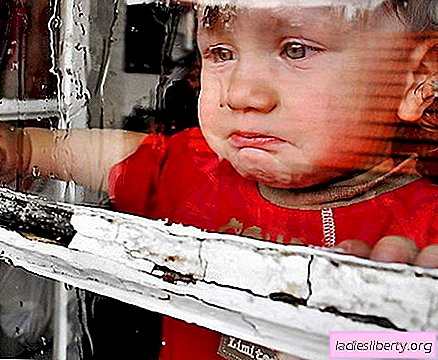
Clothing not only decorates the figure, but also performs a number of useful functions: it protects from scratches, dust, rain and the sun, warms and absorbs sweat. But clothes and linen should be periodically looked after, because insects, mold and microorganisms do not start clean.
If you want a pleasant smell of freshness to come from you, learn how to properly sort, soak, wash and dry your things.
Sorting laundry
A large amount of dirty laundry must be sorted. If all things are simultaneously put in the drum of the washing machine and the same mode is set, then they will lose their original color and shape.
For hygiene purposes, wash children's items separately from adults. It is recommended to separate underwear and adult family members.
If there is a sick person in the family, then put his things separately and wash more carefully.
Do not mix things that emit a pungent smell of cosmetics, sweat, drugs, or other chemicals.
Separate the kitchen towels immediately, their smell does not completely wash.
Bright things, especially scarlet, can molt. Therefore, it is dangerous not only to wash, but to store them next to light ones.
Many people put white and black things together in a washing machine, because they do not seem to fade. But they will not become prettier either, these colors require various detergents.
Outerwear or work clothes with pieces of dirt and spots of paint, set aside diesel fuel for pretreatment.
Items of great value or delicate texture are laid aside for hand washing in the basin or in delicate mode. Such things can be made of thin chiffon or have complex lace knitting.
Here is a list of the main features by which you need to sort the laundry before washing:
- Children and adults.
- By color.
- Structure (silk, wool, cotton).
- Degree of pollution (with large spots of dirt or almost clean).
- Appointment (working, lower, upper, bed, kitchen, for patient care).
Do not put away wet, damp laundry, mold will appear on it when stored.
Dry dirty outerwear first, then brush off sand, dust, small stones. Put the rest of the items in bags or in laundry baskets.
In the clean drum of the washing machine, first put things for the kids, then to increase the degree of pollution.
Soak
Many cars have the function of soaking or pre-washing. It is especially convenient to use for washing bedding. During soaking, the dirt particles swell and then freely separate.
But do not think that the stains of blood, paint, fat, products will disappear by themselves in a modern washing machine. Treat local stains with a stain remover first. Remove paint with a solvent, if the structure of the fabric allows.
Fatty places are rubbed with chalk, roll up the thing and leave it overnight.
Lather the dirtiest places on clothes and rub them with your hands or a soft brush.
Shirts need to be handled this way: collar, under armpits, cuffs and pockets.
Then pour a little lukewarm water into the basin and dissolve the detergent in it. Soaking water should slightly cover the item.
If after an hour the soap solution becomes dark, then it must be changed.
Soak linen with fresh blood in cold water and without soap. After re-soaking, proceed to the main wash.
Main wash
Do not stuff the drum closely, things should be wet and spin freely. And an underloaded drum will vibrate, try to fill it by two-thirds.
The amount of laundry for one wash depends on the model of the washing machine, the volume of the drum and the type of fabric. For example, woolen things strongly absorb water and increase in weight several times. Weigh things before washing or make a list of the weight of your things.
The approximate weight of dry things:
- Blouse, shirt─200 gr.;
- Pants, jeans─600 gr.;
- Shorts, skirt─300 gr.;
- Bath towel─ 400 gr.;
- Pillowcase─200 gr.;
- Duvet Cover 600 gr.;
- Bed sheet 400 gr.
Put small items into the laundry net, and then into the drum. In a mesh bag, knitted and woolen items are washed to avoid deformation.
Fasten buttons and zippers on each item.
Brooches and large buckles are best removed as they can ruin the drum or get stuck. Turn things inside out and collapse so that the buttons and decorative details are inside and do not rattle when washing.
Now pick up the detergent. If you wash light bedding, then you will need a detergent for white and air conditioning. Measure the required amount according to the instructions and fill in the cells. Wash black T-shirts and trousers with a detergent for dark linen.
Use a variety of programs, not just Quick Wash.
Please note that after the Delicate Wash program, things remain wet, wool and silk do not need to be passed through a centrifuge.
Dear knitwear I wash by hand. First clean the seams with a brush. Thick threads are passed along the perimeter with large stitches. Soak in a straightened state. Water should be barely warm.
Our grandmothers washed knitted sweaters in shampoos, and rinsed in water acidified with vinegar. You have the opportunity to purchase a modern detergent for woolen things, but pre-test it on a piece of cloth.
After the end of the program, inspect things for the quality of the wash. Re-wash or rinse if necessary. Then proceed to drying.

Drying clothes
Clean and wet linen is dried out on the street or on the balcony with open sashes. On a draft, things are aired and saturated with the smell of fresh air.
At low temperatures, the laundry hardens first, but it must not be outweighed so as not to damage.
Linen dried in the cold has a special pleasant aroma of freshness and promotes sound sleep.
Straighten wet items at the seams, and then hang them on taut, clean ropes. Blouses and shirts are more convenient to dry on plastic shoulders. So they take up less space on the dryer, do not deform and are ventilated from all sides.
Place wet woolen clothes on the net and allow excess water to drain. After an hour, spread the oilcloth on the table, on top of a piece of old fabric, and lay out your knitted blouse on it. Change the cloth moistened with moisture to dry, and turn the sweater over. Straighten an almost dry knitted item on your shoulders.
Do not be lazy, learn to properly care for your clothes.












